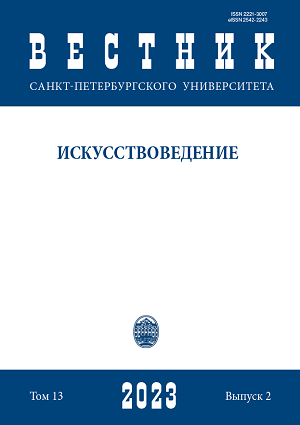Tapestry Art in Buryatia: Experience and Perspectives
DOI:
https://doi.org/10.21638/spbu15.2023.208Abstract
The article presents the main stages in the development of tapestry in Buryatia, from the establishment of this form of art based on weaving of nap-free Buryat taara carpets in the 19th–20th centuries, to the formation of the tapestry school in this region. The consideration of the art of tapestry in Buryatia in the context of events and trends in the decorative applied art of Buryatia in the 20th–21st centuries is connected with such issues as the entry of folk artistic traditions into the system of socialist realism, the process of revival of national identity, the author’s creativity in the field of tapestry weaving. The consideration of the stated topic of the article made it possible to summarize the available information and present a more integral picture of the development and current state of this form of decorative applied art of Buryatia as tapestry, as well as to introduce new material about the work of tapestry masters at the turn of the 20th–21st centuries, to consider the significance of the tapestry art in Buryatia in the synthesis of tradition and innovation. The characteristic features of the regional school of tapestry are determined by the specificity of themes and plots, the semantics of the motives of the Buryat ornament, the original author’s style of weaving and the transfer of weaving experience from generation to generation. Furthermore, the originality of the tapestry of Buryatia is connected with the use of horsehair, sarlik hair in the technique of classical weaving. At the same time, in the process of weaving, the natural shades of the hair are preserved, which endow the woven product with a subtle color palette. The attention is paid to transfer of the experience of horsehair weaving to the younger generation. For illustrative purposes, the educational institutions in the Republic of Buryatia, in which the “Tapestry” discipline is taught. In general, the role of educational institutions in the popularization of this form of art is highlighted.
Keywords:
Buryatia, tapestry, decorative and applied art, horsehair, national identity, hand weaving
Downloads
References
Downloads
Published
How to Cite
Issue
Section
License
Articles of "Vestnik of Saint Petersburg University. Arts" are open access distributed under the terms of the License Agreement with Saint Petersburg State University, which permits to the authors unrestricted distribution and self-archiving free of charge.






